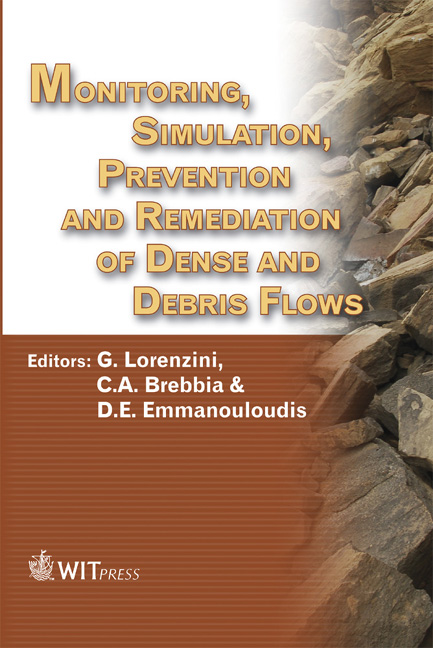Some Considerations On The Application Of The FLO-2D Model For Debris Flow Hazard Assessment
Price
Free (open access)
Transaction
Volume
90
Pages
12
Published
2006
Size
1,248 kb
Paper DOI
10.2495/DEB060161
Copyright
WIT Press
Author(s)
V. D’Agostino & P. R. Tecca
Abstract
The two-dimensional flood routing model FLO-2D, with the capabilities of simulating non-Newtonian sediment flows, is becoming more widely used to route debris flows over alluvial fans of alpine torrents and to delineate hazard areas of inundation. Nevertheless the different applications described in the literature are not comparable, because they are based on different assumptions related to the numerous parameters governing the debris flow simulation. This paper reports the applications of the FLO-2D computer model and discusses the assumptions made for the replication of two well documented debris flow events at Fiames (Belluno) and Rio Dona (Trento) in the Eastern Dolomites. The simulation results are consistent with the field observations in terms of maximum flow depths and the extent of the inundated areas in the two study sites. These two applications have enhanced the experience for the requirements of model input data in small alpine catchments, in particular the assessment of the main rheological parameters of flows, that are crucial in the design of debris flow countermeasures; leading to a proposed simplification in choosing the FLO-2D rheological parameters; and facilitating the results comparison and their interpretation among different FLO-2D simulations. Keywords: Alps, debris flow, hazard mapping, 2D model. 1 Introduction Laboratory and field researches are available in the literature on the debris flow reology. The main aim of such investigations is the capability to model
Keywords
Alps, debris flow, hazard mapping, 2D model.





